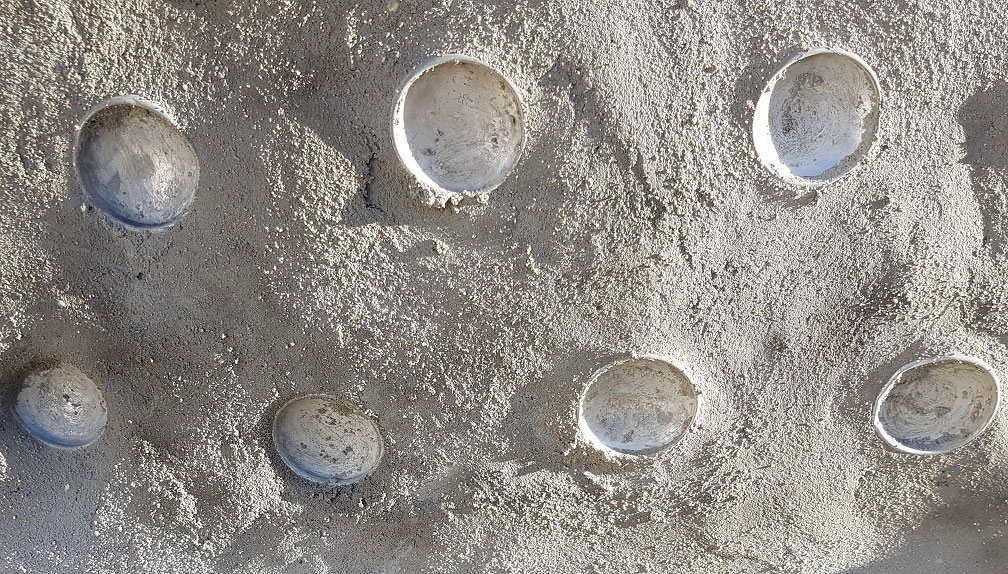Sailing in Ironbank's Earthship
19 Feb 2018
Last weekend I had the opportunity to stay in Australia’s first official Earthship, docked in IronBank, Adelaide Hills. Built by Martin Freney and 60+ volunteers, it is a beautiful unit available to rent on Airbnb.
Suitable for two people, it includes a main room ("the cave") with a kitchen, table and bed. The cave leads out to a "green-house" full of plants and veggies, with a connecting bathroom and outdoor patio area.

An Earthship is a passive solar house made of natural and upcycled materials, including earth-rammed tyres. The tyres are stacked to form external walls, creating a large thermal mass, reducing the need for heating and cooling.
The Earthship concept was pioneered by architect Michael Reynolds as a self-sustaining home. Built using low-tech construction techniques, the design relies on solar energy for thermal heating and cooling. Water is harvested from the roof, with grey-water used to irrigate the internal garden.
There are now hundreds of Earthships around the world, particularly in Taos, New Mexico, USA, where a large community are living off the grid.
"People can live in carbon zero homes right now. The technology is here. Allowing it to happen is the problem. Our rules and regulations won’t let us do it.
Michael Reynolds
Earthship Pioneer
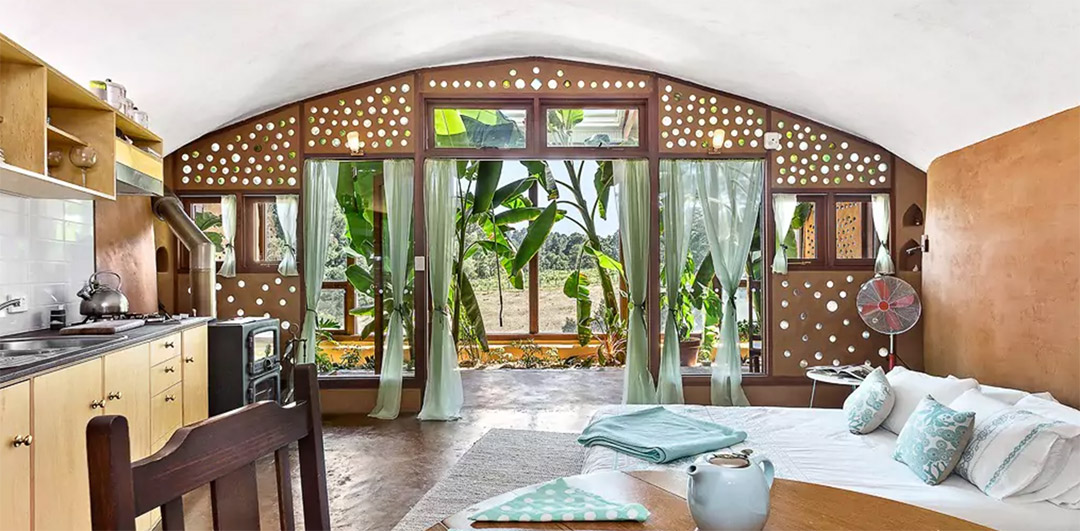
Living in a solar panel
The Earthship faces north, soaking up the moving sun. In the greenhouse amongst the plants, one feels part of nature, but safe inside from the elements.
The design includes a solar panel and DC battery system, as well as energy efficient lighting. The large windows and skylights ensure adequate interior light, supporting the plants and occupants, while reducing the need for heating.
Built into the hill, the Earthship feels like a 5-star prehistoric cave dwelling, with light streaming in from the green-house and recycled glass bottles.
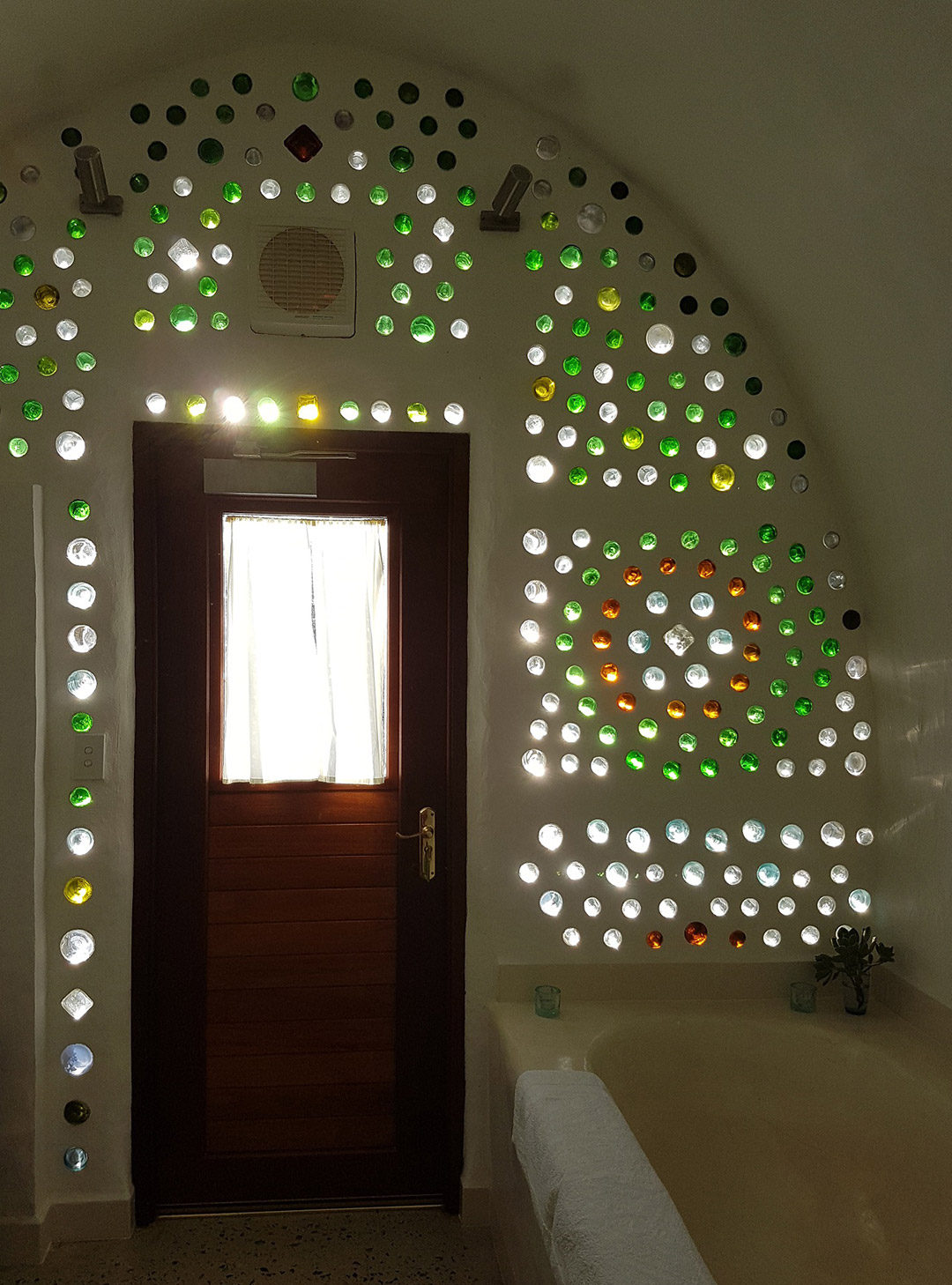
Growing food at home
Meet your new house-mates, banana trees and organic veggies!
The Earthship has an internal greenhouse, with grey-water used to irrigate the plants. The garden naturally cools and purifies the air, while also providing small amounts of food and herbs.
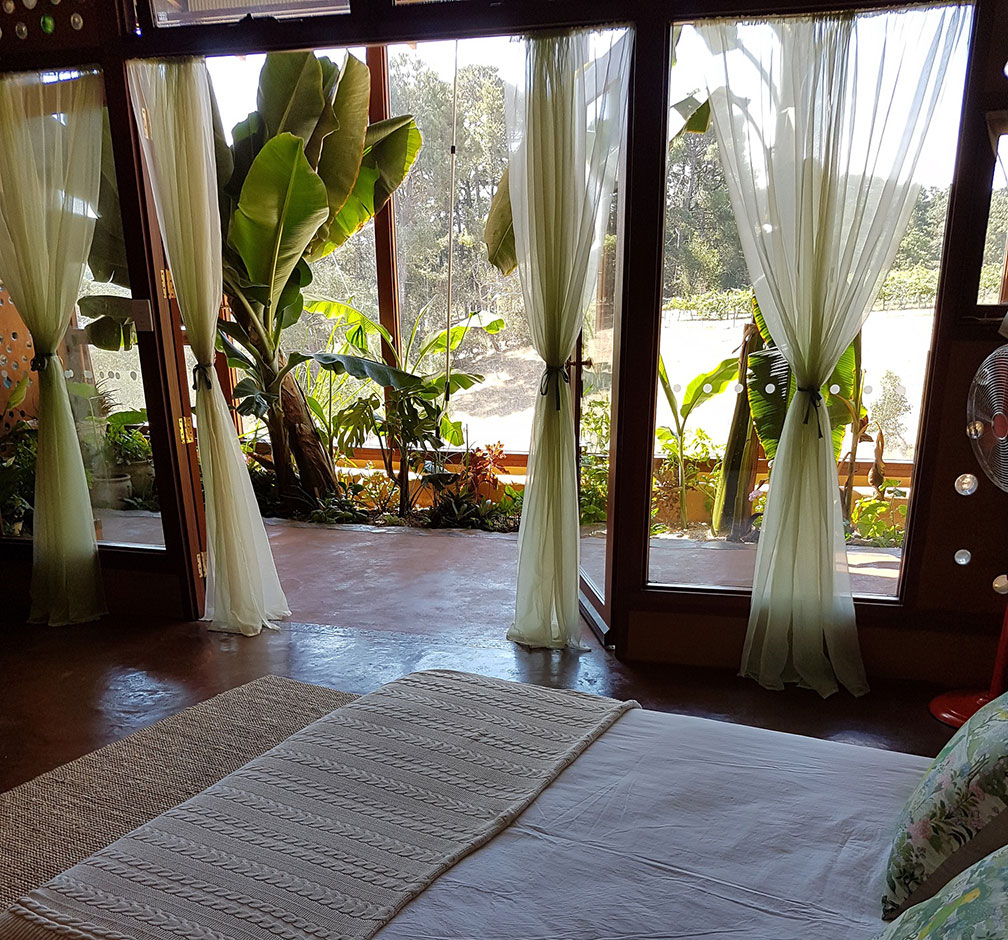
Get some space
Depending on the time of day, you might like to sit inside the cave, the green-house, or on the patio, with each space offering a different vibe and temperature.
Earthtubes, one-meter underground, bring in cool air from the outside, at the rear of the cave. This air circulates outward providing passive cooling, at no ongoing cost. On a hot day, the cave is as much as 15C cooler than outside.
Left: Earthtubes suck in air under the Earthship. Right: Cool air enters at the back of the "cave" via vents.
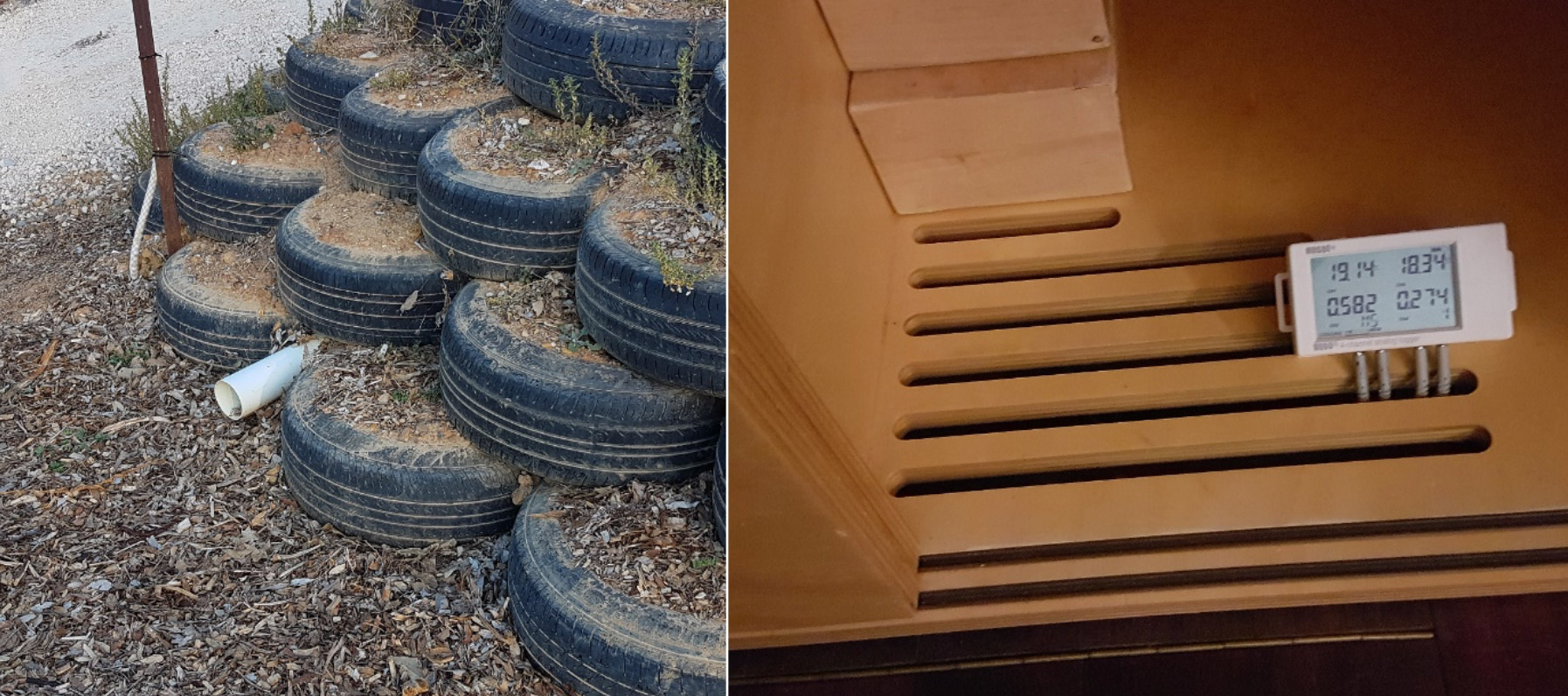
Steering the ship
In the Earthship, you are no longer dependent on the grid for power and water - that means no more utility bills. But you do need to monitor your use, to match the seasonal supply of sun and rain. Meters inside the ship provide you with data on energy and water levels. Temperature is managed using the earthtube vents, internal doors, windows, shades and sky-lights.
In managing the ship, I become aware of the sun passing overhead. It is easy to feel like you are outside, especially wandering through the green-house.
Our society tends to centralise utilities to obtain scale efficiencies, but often at a high cost to the environment. But with good design and new technologies, this is no longer necessary. We can collect power, water and food locally, in a sustainable, closed loop system.
Below: The Earthship is built into the hillside, with the roof used for water capture.
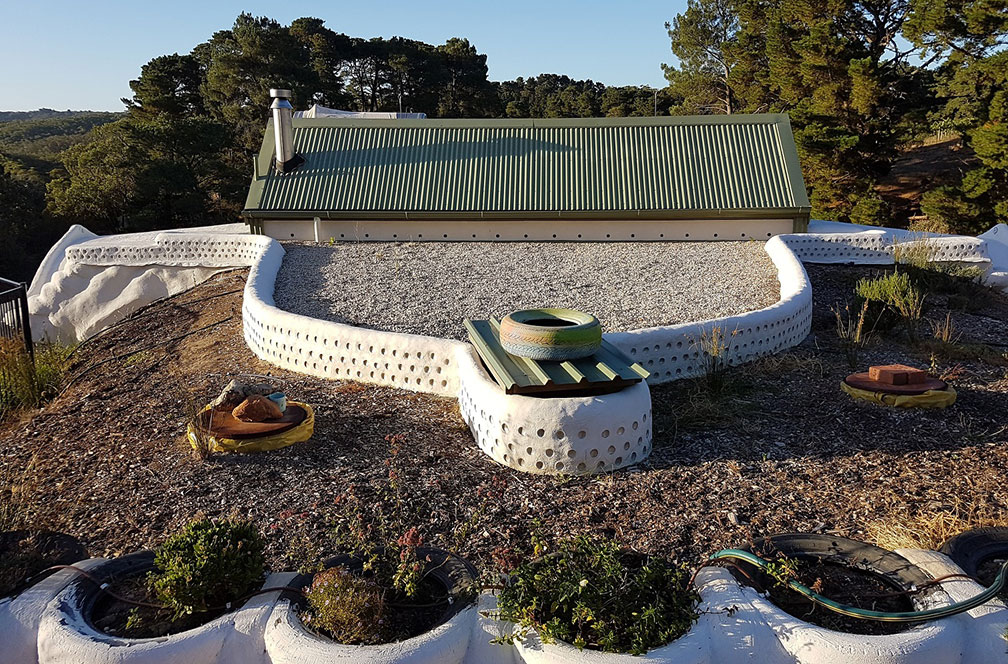
Ready to launch an Earthship?
You could start by training at the Earthship Biotecture Academy in New Mexico. Or you might like to volunteer on an Earthship build, or follow the online manual to construct your own.
The capital cost of an Earthship is similar to a standard home. However, savings are achieved by cutting utility bills, and more importantly, an Earthship enables you to live sustainably.
Or perhaps pounding tyres full of dirt is not your thing. That’s ok, you can apply these concepts to design your own eco-home, built using conventional materials.
Below: creative upcycling of aluminium cans.
